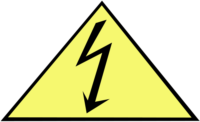Survey: 67% of safety pros conduct arc flash assessments

 A survey conducted by Littelfuse, Inc. reveals that arc flash safety is a priority among plant professionals and that protection technologies such as arc-flash relays are rapidly growing in popularity.
A survey conducted by Littelfuse, Inc. reveals that arc flash safety is a priority among plant professionals and that protection technologies such as arc-flash relays are rapidly growing in popularity.
Even 10 years ago, arc flash danger wasn’t at the top of many minds, but today 85% of the 825 survey respondents agree or strongly agree that arc flash mitigation is important. According to OSHA, industrial arc flash events cause approximately 80% of electrically related accidents and fatalities among qualified electrical workers.
Taking action
Not only has awareness increased; plant managers and company leaders are taking action. The majority of industrial professionals surveyed (67%) reported completing an arc flash hazard assessment in their facilities.
Arc flash hazard assessments have been used to determine the Hazard Risk Category (HRC) of each piece of electrical equipment (a scale of 1-4). Although the NFPA 70E is moving away from HRCs, they remain a well-known classification. More than 50% of survey respondents reported having significant (HRC 3 or higher) arc flash hazards and agreed that reducing those hazards is important.
Survey respondents ranked the popularity of solutions, with arc flash relays standing out as relative newcomers that are being rapidly embraced.
The solutions
The most popular mitigation technique is current-limiting fuses, followed by arc-resistant switchgear, arc-flash relays, and high-resistance grounding. Current-limiting fuses are well established in the industry; however, since an arc flash draws less current than a bolted fault and may not be interrupted by the circuit-breaker in its instantaneous operating time, other forms of arc flash mitigation must be used. Arc resistant switchgear is another option but it can be a costly solution that can be difficult to implement in existing facilities and offers little additional protection when a door is open. High-resistance grounding systems lower the energy available to ground faults and therefore eliminate the occurrence of phase-to-ground arc faults. Phase-to-phase arc faults or phase-to-phase-through-ground arc faults can still occur in high-resistance grounded systems requiring additional mitigation techniques. need to be implemented to lower incident energy. Arc-flash relays stand out as relative newcomers that
“In an industry that changes slowly, I’ve never seen such a fast adoption of a new technology as I have seen with arc-flash relays,” said Jeff Glenney, P.Eng., sales engineering manager, of Littelfuse. “Companies feel pressure to reduce arc flash hazards. Arc flash relays are easy to install, comparably low cost, and offer simple yet reliable operation.”
The danger is real
Considering that many survey respondents have electrical panels rated HRC 3 or higher, the danger of an arc flash is real.
The participants in the Littelfuse survey included safety managers, plant managers, purchasing managers, design/project engineers and maintenance staff/electricians from a multitude of industries.
To read a white paper based on the survey, visit www.littelfuse.com/~/media/protection-relays/white-papers/littelfuse_white_paper_pgr8800_arcflash_relay.pdf.
SOURCE: Littelfuse, Inc.
Looking for a reprint of this article?
From high-res PDFs to custom plaques, order your copy today!








